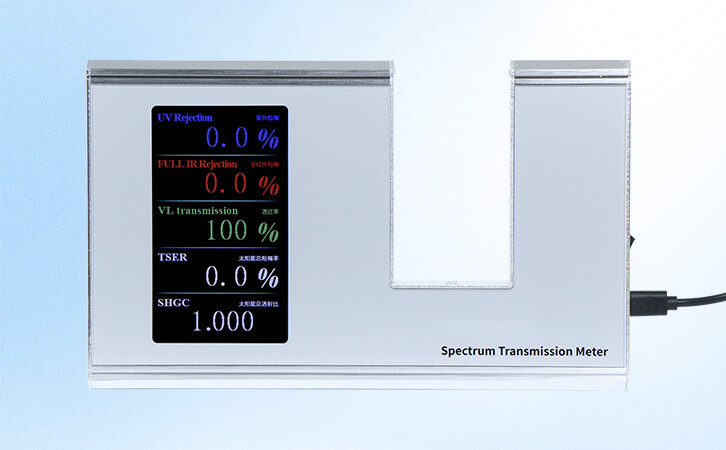
86182 Solar Film Transmission Meter
SHGC: Solar Heat Gain Coefficient
UV Peak Wavelength: 365nm
Visible Light Range: 380–760nm
IR Wavelengths: 940nm, 1400nm, and Full IR
The 86182 Spectrum Transmission Meter is designed to measure SHGC (Solar Heat Gain Coefficient), which represents the total solar transmittance. It also evaluates the rejection rates for infrared wavelengths at 940nm, 1400nm, and full-spectrum IR, the ultraviolet (UV) rejection at 365nm, and visible light transmittance from 380nm to 760nm.
The device operates by projecting ultraviolet, visible, and infrared light onto transparent materials. Sensors measure both the original light intensity and the transmitted light. The ratio between them, expressed as a percentage, indicates the material's transmittance. For most solar films, visible light is rated by transmittance, while infrared and UV rays are assessed by rejection rate.
The rejection rate = 100% - transmittance
Application
The 86182 meter is highly versatile thanks to its parallel light path design and wide test slot. It is ideal for measuring solar films, laminated glass, and other thick or multi-layered materials. This instrument is well-suited for use in product exhibitions, manufacturing, quality control, and inspection of solar films.
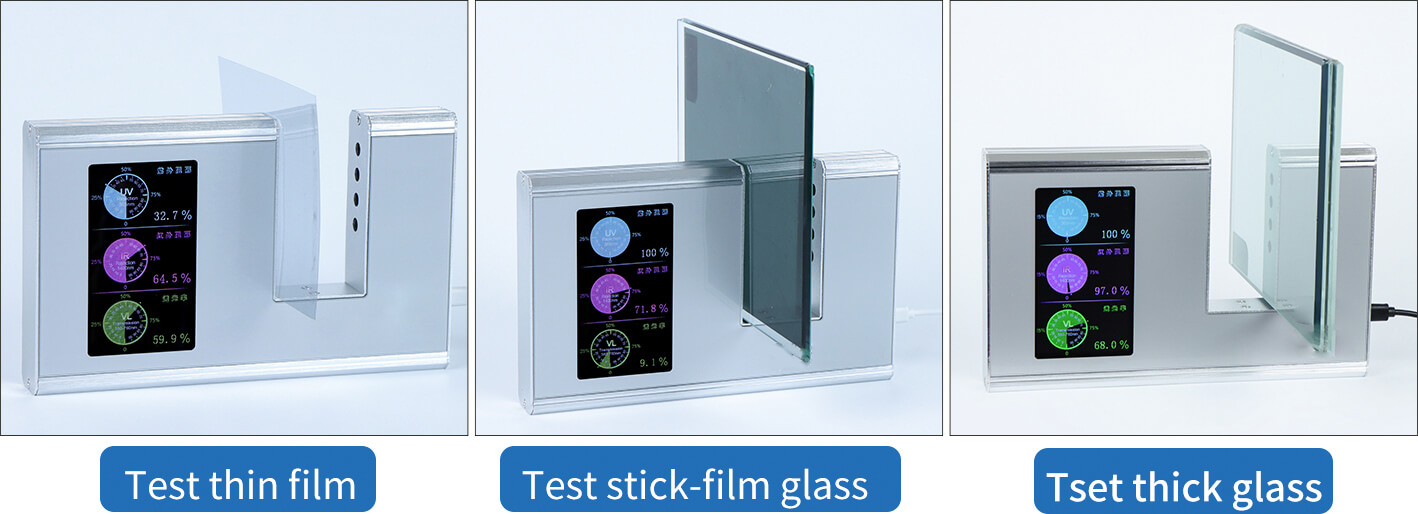
Parameters
| Parameter | Value |
|---|---|
| UV Peak Wavelength | 365nm |
| IR Peak Wavelength | 940nm, 1400nm, Full IR and SHGC |
| Visible Light | 380-760nm (conform to CIE photopic luminosity function) |
| Resolution | 0.1% |
| Measurement Accuracy | ± 2% (colorless and uniform transparent material) |
| Test Card Slot | 47mm×91mm (W*H) |
| Weight | about 590g |
| Dimension | 216mm * 134mm 8 29mm (L*H*W) |
| Power Supply | DC5V/1A |

Features
Measures Seven Parameters
The device can simultaneously measure seven key metrics: UV rejection at 365nm, IR rejection at 940nm, 1400nm, and across the full IR spectrum, visible light transmittance, TSER, and SHGC.

Large LCD Display
Equipped with a large color LCD screen that clearly displays infrared and ultraviolet rejection rates.
Ideal for Thick Materials
Its parallel light path enables accurate testing of thick glass and layered materials.
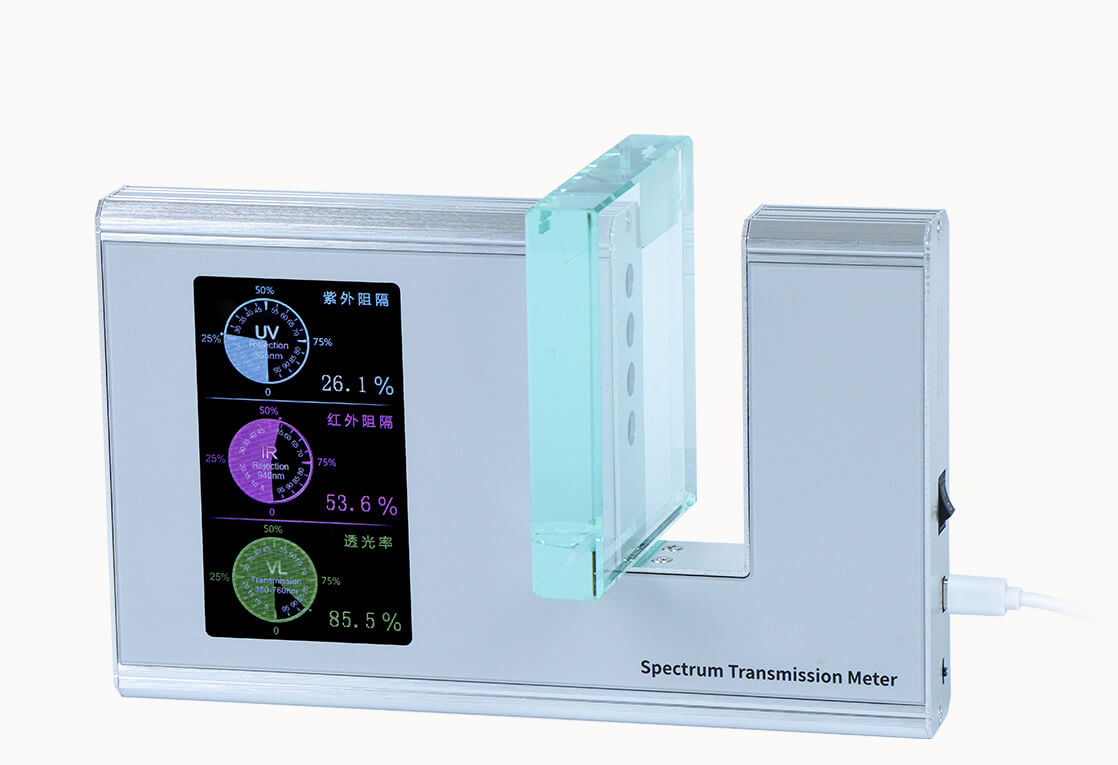
Real-Time Auto Calibration
The meter features dynamic self-calibration, automatically adjusting after power-up for consistent accuracy.
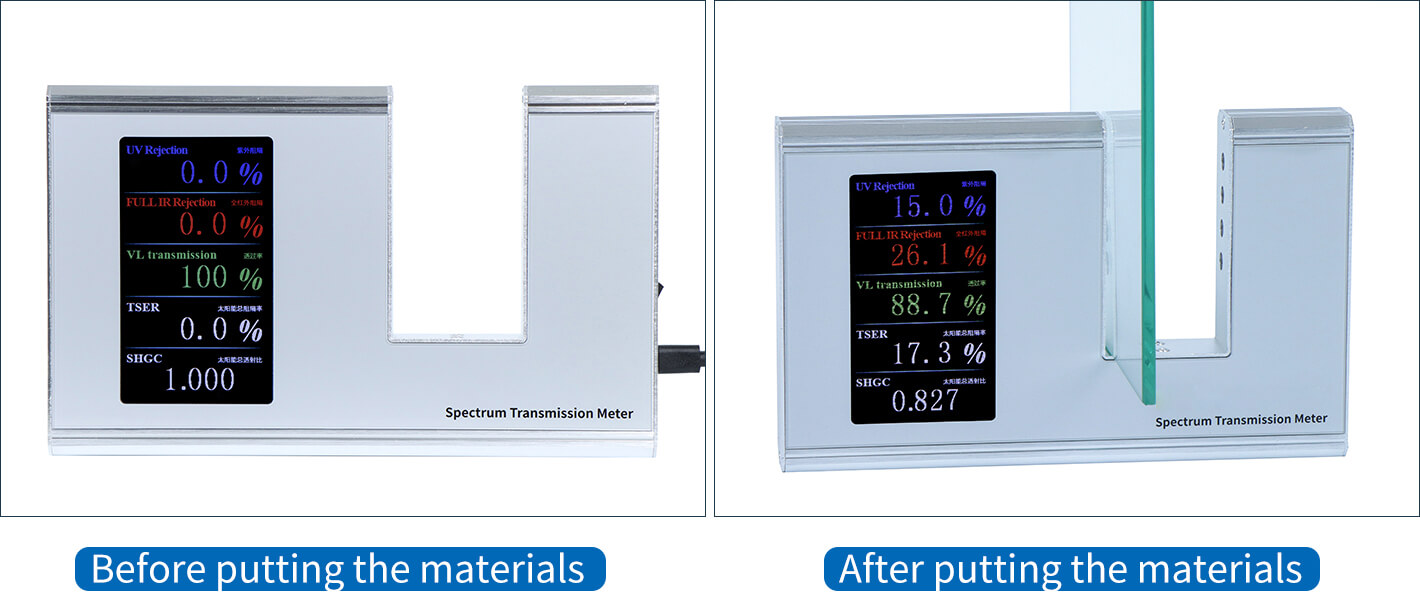
USB Type-C Power Connection
Comes with a USB Type-C port, allowing easy connection to power banks or mobile power sources.
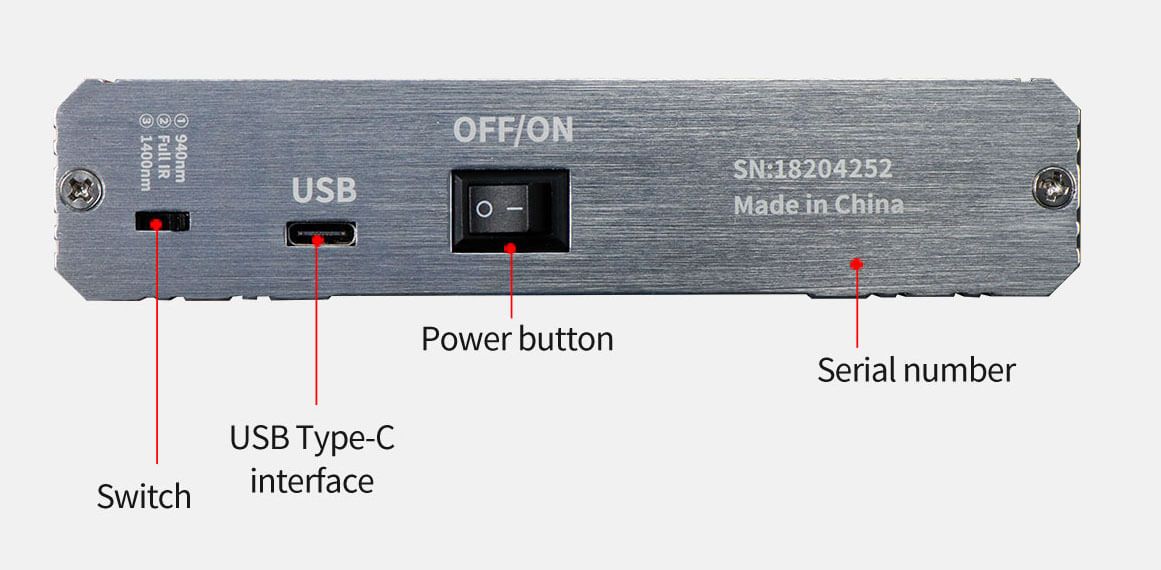
Support Pillar Included
A support rod is included, allowing the device to be tilted for more convenient viewing during operation.
Packing
| No. | Description | Quantity | Unit |
|---|---|---|---|
| 1 | 86182 Solar Film Transmission Meter | 1 | pcs |
| 2 | DC5V Adapter | 1 | pcs |
| 3 | User Manual | 1 | pcs |
| 4 | Certificate / Warranty Card | 1 | pcs |
| 5 | Support Pillar | 1 | pcs |
| 6 | Packing Box Dimension 34*29*9 cm(L*W*H) | 1 | pcs |

FAQ
-
1. Why is 86182 so expensive and what advantages does it have compared to other window film transmission meters?
86182 can measure six parameters: UV rejection rate, visible light transmittance, infrared 940nm and infrared 1400nm rejection rate, full infrared rejection rate and SHGC. Other instruments can only measure three of these parameters, so there is a difference in price;
SHGC is the total transmittance of solar energy, through which the SC shading coefficient can be calculated;
86182 uses a large color LCD screen, which can switch between graphic display and percentage data, making the reading more intuitive.
-
2. The difference between 86182 window film transmission meter and 86183 spectrum transmission meter
86182 can measure six parameters of visible light 380-760nm, ultraviolet 365nm, infrared 940nm, 1400nm, full infrared and SHGC.
86183 can measure visible light 380-760nm, ultraviolet 365nm, infrared 940nm.